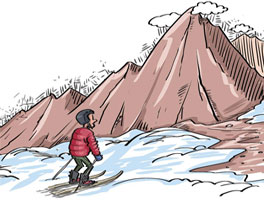 |
Dear readers,
Welcome to the Climate Weekly newsletter by the Centre for Science and Environment’s Climate Change programme and Down to Earth.
Climate finance – although lacking a formal definition – typically refers to money that is directed from wealthy, industrialized countries to developing countries to help them reduce their GHG emissions (i.e., climate mitigation), or strengthen their natural and built environment to withstand the impacts of climate change (i.e., climate adaptation). Through the multilateral process driven by the UN, wealthy countries are being asked to agree to transferring a higher sum annually on a collective basis, than the current quantum, which itself is less than USD 100 billion per year. These discussions will arrive at a new climate finance target this year in November at COP 29 in Baku, Azerbaijan. The target is formally known as the New Collective Quantified Goal (NCQG), and my colleague Sehr Raheja’s new explainer will tell you everything you need to know to catch up.
Interestingly, India is the only country that has proposed a clear figure – USD 1 trillion per year, to be considered the quantum of money that developed countries must provide to developing countries as part of the new goal. For this, India has suggested a timeframe of 10 years, with separate annual mobilisation targets for each five-year period to be in line with the cycles of updating country climate pledges or Nationally Determined Contributions.
CSE's Climate Change programme will be following the negotiations through the year - stay tuned for our updates and materials in this crucial year of climate finance.
Elsewhere, record low snowfall in the Himalayas is evidence that climate change is speeding up. Heat exposure, a climate change impact, could double the risk of miscarriages or stillbirths in women, based on a new study. And you can watch this video to learn about why Sonam Wangchuk, an environmentalist, was recently on a “climate fast”.
|
|
 |
| |
 |
|
| |
 |
 |
| |
By - Avantika Goswami
Climate Change, CSE
|
| |
|
 |
|
|
| |
 |
|
| |
| EXTREME WEATHER TRACKER |
| |
A winter without snow, 27 March 2024
|
 |
 |
|
|
| |
 |
|
| |
 |
 |
Humid heatwaves in southern West Africa made 10 times more likely by climate change: Study, 24 March 2024
|
|
|
| |
|
|
| |
|
|
| |
 |
|
| |
|
|
| |
|
|
| |
|
|
| |
 |
|
| |
CLIMATE NEWS | SCIENCE| IMPACTS| POLITICS |
|
| |
 |
|
| |
|
|
| |
 |
|
| |
|
|
| |
 |
|
| |
|
|
| |
 |
|
| |
|
|
| |
 |
|
| |
|
|
| |
 |
|
| |
|
|
| |
 |
|
| |
|
|
| |
 |
|
| |
|
|
| |
 |
|
| |
| Online Training |
|
Onsite Training |
| |
|
|
|
|
|
|
|
|
| |
|
|
| |
|
|
| |
|
|